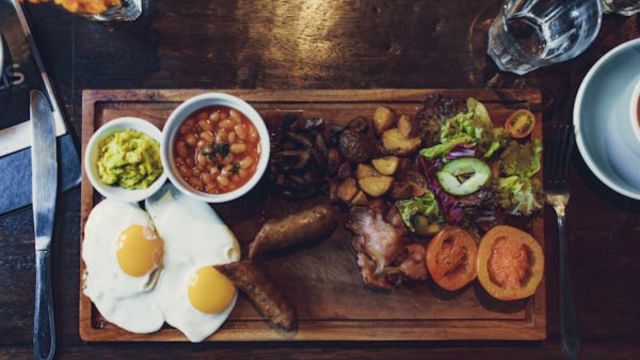At 50, his weight stuck at 97 kg despite exercise: How protein helped him lose weight (original) (raw)
 When most people hear the word “calories,” they tend to lump all foods together. (Representational Photo: Pexel)
When most people hear the word “calories,” they tend to lump all foods together. (Representational Photo: Pexel)
At 50, Raj (name changed) was doing everything right. He stayed active, met the recommended 150-minute weekly exercise mark and wasn’t a stranger to movement. Yet, his weight stubbornly hovered at 97 kg, well above the ideal 78 kg for his 5’10” frame. His waist circumference had expanded to 44 inches while his cholesterol (245 mg/dl), triglycerides (300+ mg/dl), and low HDL (33.7 mg/dl) had put him at serious risk of heart disease.
The culprit was his diet packed with excess carbs, fats and alcohol, which left him constantly battling hunger and consuming more calories than his body could burn. Despite eating 86 grams of protein daily (around 1.1g/kg of body weight), his appetite remained insatiable, leading to mindless snacking and overeating.

The shift that changed everything
Rather than prescribing a drastic diet overhaul, we made a strategic adjustment: replacing empty calories with protein. His intake was increased to 125 (500 kcal) grams per day (1.6g/kg of body weight), while his total calorie consumption was balanced at 1,700 kcal — just within 200 calories of what his body naturally burned daily.
The first 2.5 weeks were an adjustment, but something remarkable happened — his hunger stabilised. There were no more uncontrollable cravings or energy crashes. Over 1.5 years, he steadily lost 15 kg, and — more importantly — he sustained the weight loss without feeling deprived.
This approach wasn’t about extreme restriction; it was about nutrient prioritisation. By adding the right building blocks of protein to his diet, Raj didn’t just lose weight — he gained control over his waist circumference, improved his cholesterol profile, and set himself up for a healthier future.
Why protein does more than just build muscle
When most people hear the word “calories,” they tend to lump all foods together. One gram of protein contains four calories, same as carbs. Fat contains nine calories per gram. A recent study published in Nutrients underscores why protein, especially higher-quality ones with optimal concentrations of essential amino acids in them, stands out among other calorie sources such as carbohydrates and fats. Although protein is well known for its role in muscle growth, scientific data suggests that it also supports some critical functions throughout the body.
Your vital organs, such as the heart, liver, and kidneys, depend on the influx of amino acids from the protein in your diet to constantly regenerate themselves. Proteins form the foundation for collagen, which is essential for maintaining strong, healthy bones and joints. Many antibodies and immune cells are built from proteins. Collagen and keratin, which are critical components in your skin, hair and nails, are made out of the amino acids you get from dietary proteins.
Story continues below this ad
Why protein calories are different
To understand how protein’s role goes beyond just calorie intake, think of money in a business. A savvy entrepreneur knows there’s a difference between money used in capital expenses (e.g., buying essential equipment) and operating expenses (e.g., salaries or office supplies). Protein is like the capital budget: it supports your body’s infrastructure, such as organs, bones, and muscles, which in turn keeps your entire system functioning correctly. Carbohydrates and fats are more like operating expenses: they supply immense energy to the body but do little to build or strengthen its core structures.
If you skimp on protein (insufficient capital investment) but consume disproportionately higher energy through carbs and fats (operating expenses), you will have poor metabolic health and weight gain.
How much protein do you need?
Research typically recommends consuming between 1.2 to 2.8 grams of protein per kilogram of ideal body weight. The exact daily amount would vary based on your lifestyle, dietary adherence, age, health status, and level of physical activity. Older adults need to take the higher end quota to counter age-related muscle loss, typically around 1% per annum of muscle loss after age 30 and around 50% total muscle loss by age 80. When we’re recovering from illness or infection, the rate of protein breakdown increases in the body, thus requiring us to consume adequate daily protein.
(Thakkar is a functional medicine expert)